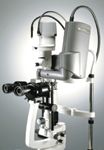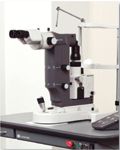Article
Medical, surgical advances lead to better patient care
In the area of laser surgery, selective laser trabeculoplasty has come into more widespread use.

Three glaucoma specialists-Louis B. Cantor, MD, Jay C. and Lucile L. Kahn Professor of Glaucoma Education and director, glaucoma service, Indiana University, Indianapolis; Eve J. Higginbotham, MD, professor and chairwoman, department of ophthalmology and visual sciences, University of Maryland School of Medicine, Baltimore; and Joel S. Schuman, MD, Eye and Ear Foundation Professor and chairman of ophthalmology, University of Pittsburgh Medical Center-shared their perspectives on notable trends and developments during the past year.
In the area of medical management, pharmaceutical manufacturers of topical IOP-lowering medications have been developing a number of fixed-combination products, and clinicians anticipated 2004 might be the year at least some of those agents might become available. Now, they are looking forward to next year for the possible approval of those duo preparations.



"Fixed combination products have significant advantages that make them very attractive for our patients," he explained. "They can reduce toxicity from preservative exposure as well as increase efficacy by potentially enhancing compliance and eliminating concerns about drug washout in patients who do not wait the recommended 5 minutes between dosing."
Increasing experience with SLT In the area of laser surgery, selective laser trabeculoplasty (SLT) has come into more widespread use this year, while long-term follow-up data from patients treated with that procedure are becoming available. Notably, an article from Juzych et al. was published in the October issue of Ophthalmology showing that the IOP-lowering effect of SLT at 5 years was comparable to that of argon laser trabeculoplasty in eyes with primary open-angle glaucoma (POAG) with maximally tolerated medical therapy, said Dr. Schuman.
Newsletter
Don’t miss out—get Ophthalmology Times updates on the latest clinical advancements and expert interviews, straight to your inbox.




